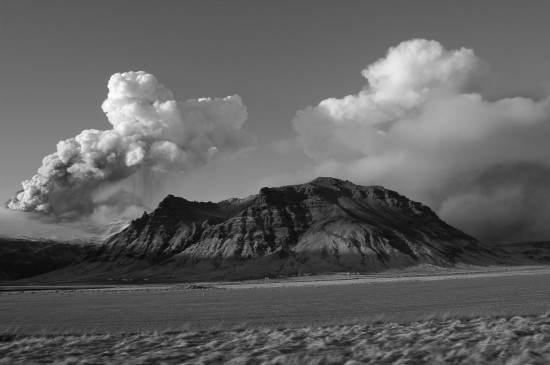My aunt ran an editorial in the L&M Publications newspapers, in Long Island, New York, last week featuring a couple of my photos from the Eyjafjallajökull eruption, which I visited in April.
Category Archives: Formats
Iceland Eruptions Fuel Interest in Volcanic Gas Monitoring
REYKJAVIK–As a brown cloud of ash drifts down from the slopes of Eyjafjallajökull toward their truck, Hanna Kaasalainen warns a colleague that their gas masks won’t be much good against carbon dioxide. The masks filter out poisonous gases released by magma such as sulfur dioxide, but carbon dioxide can simply displace oxygen in the air, asphyxiating the researchers as they take ash samples alongside a haze-enshrouded, deserted road. “We shouldn’t stay very long,” the University of Iceland geochemistry graduate student advises, before strapping on a bright yellow mask and opening the door. Continue reading Iceland Eruptions Fuel Interest in Volcanic Gas Monitoring
Transitioning from Researcher to Outreacher
 Shelley Bolderson was scraping mud from a trowel one day in an Anglo-Saxon midden in St. Neots, United Kingdom, when she realized she didn’t want to be an archaeologist any longer. “It was winter, and I’d spent ages on that particular site,” she recalls. “It was really kind of soul-destroying work.”
Shelley Bolderson was scraping mud from a trowel one day in an Anglo-Saxon midden in St. Neots, United Kingdom, when she realized she didn’t want to be an archaeologist any longer. “It was winter, and I’d spent ages on that particular site,” she recalls. “It was really kind of soul-destroying work.”
Until that point, Bolderson had worked as a freelance archaeologist around England, mostly in urban environments, where she assessed building sites before development. She had a bachelor’s degree in archaeology from the University of Southampton in the U.K. and wasn’t interested in doing a master’s or Ph.D. She sought temporary work while deciding what to do next.
One of her temporary jobs was at the University of Cambridge in the U.K. in the office that coordinates the Cambridge Science Festival, an annual, weeklong event that shares Cambridge-area science research with the public. “I saw a new career I had no idea existed beforehand and thought it looked really exciting,” she says. When a position coordinating the science festival opened up in the office, Bolderson applied for it.
Continue reading Transitioning from Researcher to Outreacher
Haitians go home as government proposes relocation
Almost as soon as the earthquake hit Haiti on 12 January, urban planners and scientists dusted off plans to relocate some of Port-Au-Prince’s infrastructure away from the crowded city centre, which is dangerously close to the Enriquillo fault.
In discussions with the Haitian government last month, geophysicists advocated relocating critical city infrastructure to the north (See: Haiti earthquake may have primed nearby faults for failure, Nature News). Now, at a United Nations donors’ meeting today, Haitian officials are due to present their Action Plan for National Recovery and Development, which incorporates recommendations to rebuild some of Port-au-Prince’s infrastructure in provincial towns further from the fault (New York Times).
At the same time, some Haitians have begun returning to their homes, or at least the lots where their homes once stood, encouraged by relief agencies keen to avoid flooded refugee camps during the upcoming rainy season (Associated Press).
Read the rest of this blog post on The Great Beyond: [html] and see my previous article on the Haiti earthquake: [html]

